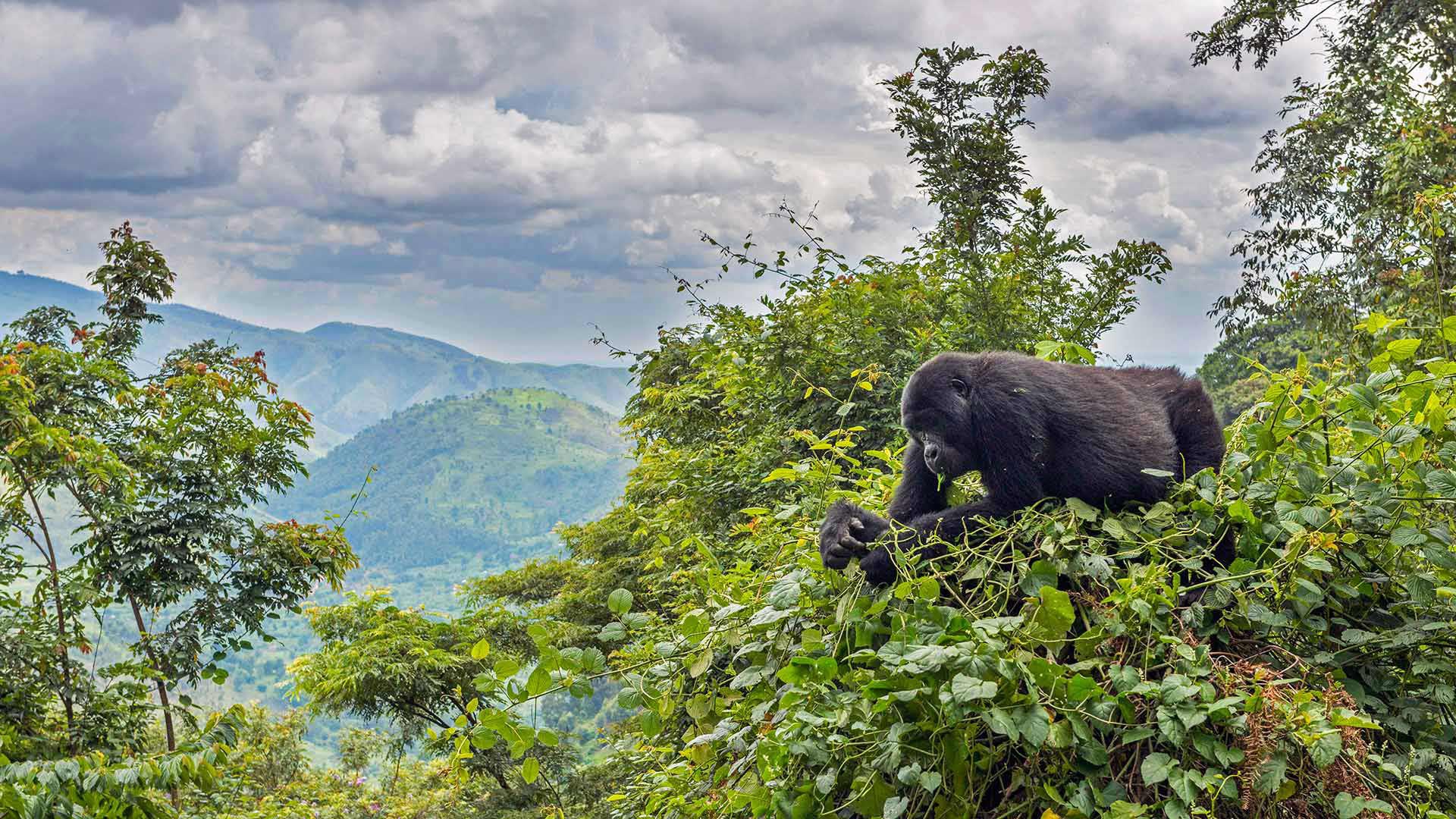
Uganda
Uganda is a country with still a significant level of forest cover. A little over 9000 square km is covered by rainforest, with a further 39,000 square km of other woodland, and just 350 square km of plantation (an encouragingly low level). This equates to just 24% of the countries area. Just 16% is protected for the natural world, though this still allows a small area of savannah and similar.
With both rainforest and savannah ecosystems, Uganda has a wide array of wildlife within its border.
From rainforests, there is a wide array of wildlife, many of which are very greatly sort-after by tourists. Mountain gorillas are found in Uganda with 459 living in the country (1063 in total), 5000 wild chimpanzee (1500 of these are in Kibale forest. Other primates include Golden monkey, Blue monkey, De Brazza’s monkey, Black-and-white colobus monkey, Red colobus, Potto, Bush baby, Grey-cheecked mangabey, L’Hoest’s monkey, Red-tailed monkey, Vervet monkey, Patas monkey and Baboon.
While there is currently only a handful of forest elephants in the country (some have been returning across the border from nearby countries), and the elephant population has faced horrific poaching, the Savannah elephant population of Uganda is now around 5000 Kidepo, Murchison-Semliki, and the Greater Virunga Landscape.
Around 400 lions within the country, in a small number of national parks, Leopards are hard to see in forest reserves (though they are often there, unnoticed – there is a wonderful story in “in the shadow of mankind” by Jane Goodal, about a leopard encounter) but the easiest places to see them include Kidepo Valley National Park, Murchison Falls National Park, Queen Elizabeth National Park, Lake Mburo National Park and Semiliki National Park (largely savannah ecosystems), Cheetah are found in the country, and their population varies between around 53 and 300 individuals again found in the largely open parks with savannah ecosystems. Kidepo Valley National Park has also recorded its first wild dog sighting within the country in 30 years (within the last year).
Rhino, both black and white, were hunted to extinction within the Ugandan borders around 30 years ago, but there has been an effort to return them. While likely to have formerly been home to the northern white rhino, it appears that the southern white rhino is the species that is being returned (not a surprise as just 2 of the northern white rhino remain). While evidence suggests that the 2 white rhino species split millions of years together, a change in weather 14,000 years ago, caused the savannahs to greatly expand, and brought them together to interbreed once again. It is impossible to preserve the Northern white rhino as it is functionally extinct (though there are 2 females that remain of this species, these 2 are incapable of breeding enough to recover this species across its range) but given that these two species really only deserve subspecies status, it is highly unlikely that the Southern white rhino will damage ecosystems around where it is introduced, as it fill such a simple ecosystem niche to its northern white rhino cousin. Similarly, the Ugandan black rhino (subspecies) has not been seen in the country since 1983, and this subspecies may well be extinct; however, plenty of other black rhino survive, and a non-native subspecies is likely to do far less damage to ecosystems than an ecological hole from this species being extinct. The buffalo population of the country is healthy, with around 44,000 in the wild.
There is more than enough wildlife within Uganda, to keep even the most demanding happy, and a great deal of destinations to head for. I hope to list many. Below this, will be a list of all articles from this website that mention Uganda, and below that a video. Below that, I will list any destinations or resources that might be of use.










